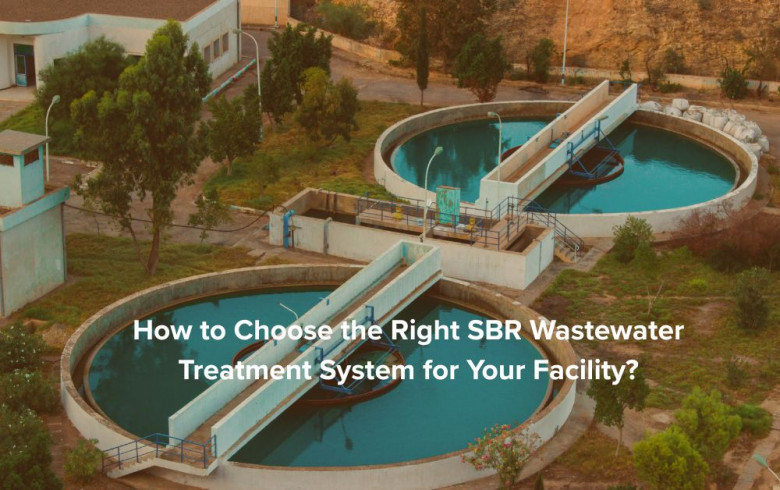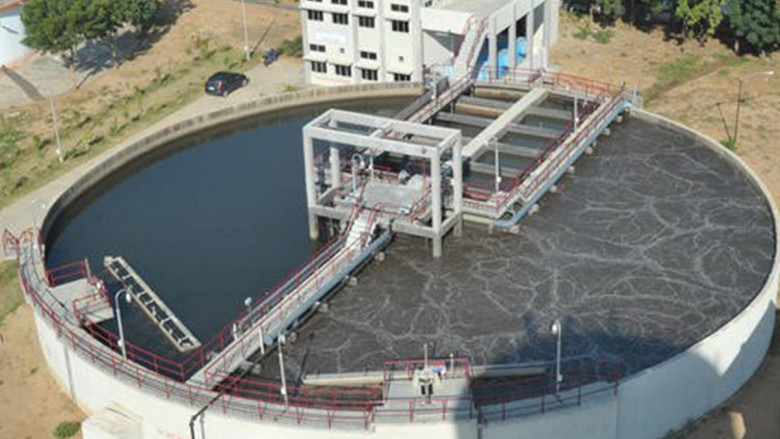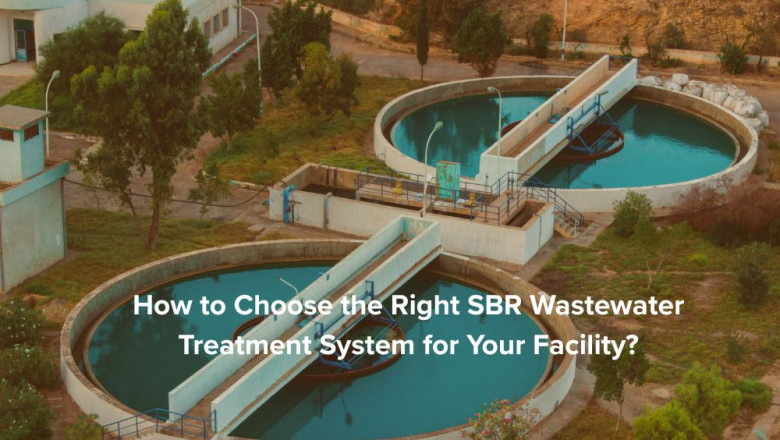views

Effective management of wastewater is a must for industrial, commercial, and municipal facilities to stay within environmental regulation requirements and practice sustainable operations. One of the most efficient methods is the Sequencing Batch Reactor (SBR) system of wastewater treatment, which boasts flexibility, efficacy, and effective treatment of diverse flow rates.
But choosing the proper SBR system for your plant involves the right consideration of such factors as treatment capacity, effluent quality, and operational efficiency. This guide discusses the essential factors in assisting you to make the right choice.
Learn About an SBR Wastewater Treatment System Basics
Prior to deciding on an SBR system, you should learn how it works:
1. Batch Processing:
● SBR systems operate in cycles, treating wastewater in batches rather than a continuous flow.
● Each cycle includes filling, aeration, settling, decanting, and idle phases.
NOTE : Blackwood Hodge Power Services LTD Uganda had successfully installed SBR Wastewater Treatment system, ensuring efficient wastewater management for industrial clients. Their systems improved environmental compliance. Contact Blackwood Hodge Power Services LTD Uganda for reliable SBR Wastewater Treatment system solutions that ensure optimal water treatment and environmental sustainability.
2. Efficient Biological Treatment:
● The system uses activated sludge to remove organic matter and pollutants.
● Ideal for treating both domestic and industrial wastewater.
3. Compact and Cost-Effective:
● Requires minimal space and infrastructure, making it cost-effective for small to medium-sized facilities.
Assess Your Facility’s Wastewater Characteristics
Selecting the correct SBR system begins with examining the character of your facility's wastewater. Keep the following in mind:
1. Volume and Flow Rate:
● Identify the average daily wastewater volume and maximum flow rate.
● Select a system that has enough capacity to accommodate fluctuations.
2. Contaminant Load:
● Take readings of the Biochemical Oxygen Demand (BOD), Chemical Oxygen Demand (COD), and Total Suspended Solids (TSS).
● Verify that the system will readily remove contaminants unique to your business.

3. Effluent Quality Requirements:
● Define the level of purification.
Evaluate System Design and Capacity
Selecting the right design and capacity is critical for optimal performance.
1. Modular vs. Custom Design:
● Modular SBR systems are pre-engineered and ideal for smaller facilities with standard requirements.
● Custom-designed systems offer flexibility for complex wastewater profiles.
2. Capacity Considerations:
● Select a system with an adequate treatment capacity according to your existing and projected wastewater volume.
● Oversizing the system results in inefficiency, while undersizing may mean poor treatment effectiveness.
3. Automation and Controls:
● Consider systems with automatic controls for more effective monitoring and operation.
● Higher-end systems come with remote monitoring, minimizing manual intervention.
Take into Account Energy Efficiency and Operating Expenses
Energy use and maintenance fees directly affect the long-term feasibility of the system.
1. Energy-Efficient Aeration:
● Choose systems with energy-efficient blowers and diffusers.
● Effective aeration saves energy and enhances treatment efficiency.
2. Maintenance and Downtime:
● Choose a system with fewer moving parts and easier maintenance requirements.
● Reduced maintenance costs increase overall cost-effectiveness.
3. Chemical Usage:
● Take into consideration the chemical needs for pH correction and disinfection.
● Low-chemical dependency systems are more cost-effective and environmentally friendly.
Compliance with Local Regulations
Ensuring that your SBR system complies with regulations is critical to prevent fines and legal problems.
1. Discharge Compliance:
● Ensure the system complies with local environmental and wastewater discharge laws.
● Ensure effluent quality is up to the required standards.
2. Certification and Quality Assurance:
● Select systems from well-known manufacturers with certifications like ISO, CE, or UL.
● Certified systems ensure reliability and compliance.
Conclusion:
Selecting the proper SBR wastewater treatment system is a decision that has far-reaching effects on your facility's efficiency, compliance, and sustainability. By evaluating your wastewater properties, considering system capacity, and focusing on energy efficiency, you can make an educated decision.
Blackwood Hodge Power Services LTD provides cutting-edge SBR systems specifically designed to address the specific requirements of different industries, providing enhanced treatment performance and long-term reliability.
Invest in the proper SBR system today for cleaner effluent, lower operating costs, and better environmental compliance.
For More Insightful Articles Related To This Topic, Feel Free To Visit: NPR Live














Comments
0 comment